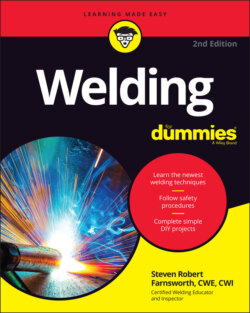Читать книгу Welding For Dummies - Steven Robert Farnsworth - Страница 15
TRACING THE HISTORY OF WELDING
ОглавлениеWelding is one of the newest metal-working trades; it can be traced back to about 1000 B.C. Most historians agree that the first kind of welding done by humans was the lap welding of gold, which was used to create simple gold ornaments. But welding really started to take shape when people figured out how to hammer brass and copper together to make bronze. Bronze was a real game changer, especially when it came to making basic types of farming equipment and tools, or weapons of war.
The next big jump in technology was during the Industrial Revolution (from the mid-1700s to the mid-1800s). That’s when hammer welding (also known as forge welding) was developed. In hammer welding, metal is heated to its plastic state, and then two separate pieces are laid side by side and hammered together. (If you’ve ever seen a blacksmith at work, you’ve seen hammer welding in action.)
The next step was based on the discovery of acetylene in the middle of the 19th century. Controlled use of acetylene gas (combined with oxygen) allowed people to cut and melt metals in a way that wasn’t possible before. But welding as you know it today came about in the early 20th century, after people had learned how to harness and use electricity. Very basic electric welding equipment and techniques were already being used across the globe at that point, and World War I made it clear that welding technology was going to be critically important for cranking out massive amounts of metal materials, tools, and machinery. Many of the prominent organizations and companies that loom large in the world of welding today got their start during that period. Improvements in welding processes and equipment came in leaps and bounds, and before the first half of the 20th century was over, the world had seen the creation of the major welding techniques that I cover in this book: stick welding, mig welding, tig welding, and oxyacetylene welding, as well as oxyfuel welding and cutting.
The big question with repair work is whether it makes more sense (especially with regard to time and money) to make a repair or simply replace the broken part or product. That’s not always an easy call to make, and I address the various facets of that question in Chapter 18.
When you’re welding to repair something, your goal should always be to produce a weld that’s stronger than the original piece or product. If you’re going to be working on something, why not improve it?
